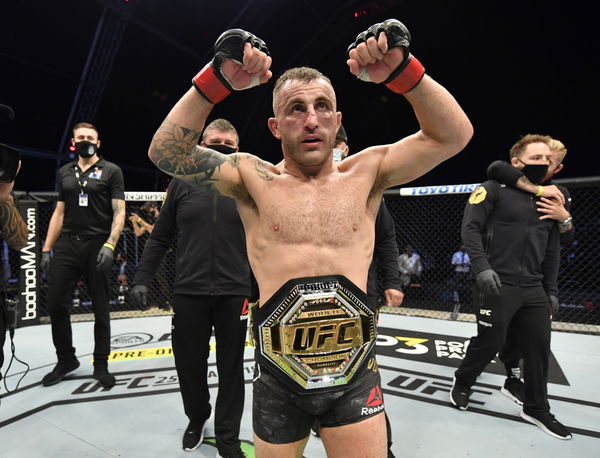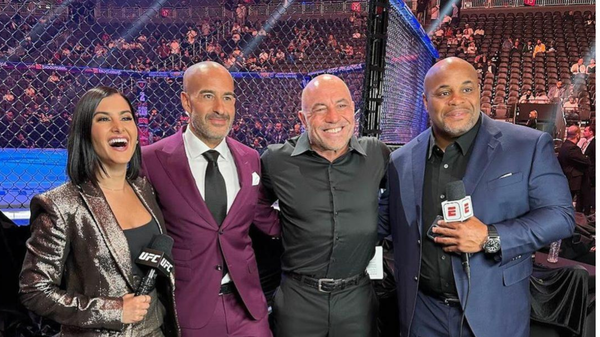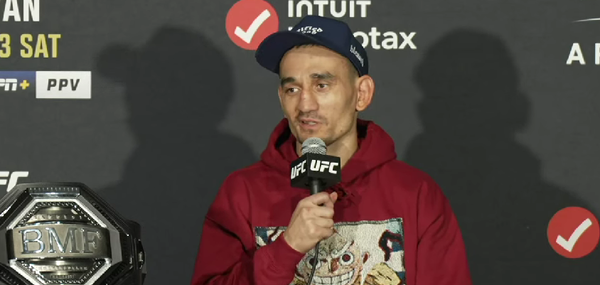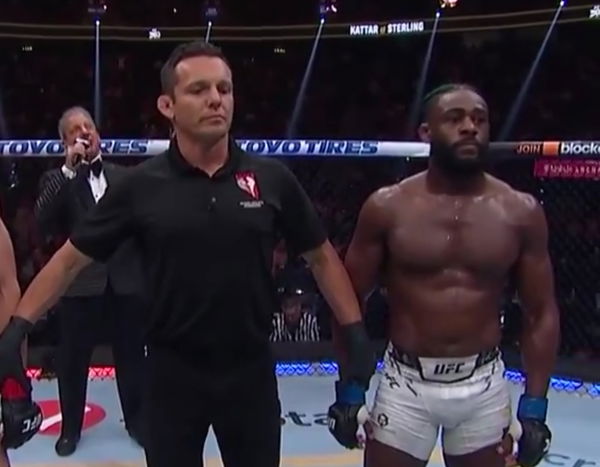Five Necessary Measures for Improving Judging in the UFC

Follow Us

via Imago
ABU DHABI, UNITED ARAB EMIRATES – JULY 12: Alexander Volkanovski of Australia celebrates after his split-decision victory over Max Holloway in their UFC featherweight championship fight during the UFC 251 event at Flash Forum on UFC Fight Island on July 12, 2020 on Yas Island, Abu Dhabi, United Arab Emirates. (Photo by Jeff Bottari/Zuffa LLC)
Close decisions in the UFC is something that occurs now and then. Every time when Bruce Buffer reads out the judges’ scorecard of any such fight, the issue of controversial judging in the sport gets in the forefront. However, the problems involving judging in the UFC is so frequent that it calls for a change in the machinery.
The fight between Paul Felder and Rafael dos Anjos was the latest instance of when a judge scored a fight decisively wrong. While two of the three judges gave the fight to Felder 50-45, the third judge scored the fight 48-47 in favor of Felder. The scorecard shocked not just the fans but Felder as well, whose reaction was enough to tell the atrocious nature of the decision.
The 48-47 scorecard was actually real pic.twitter.com/4T2WS1UVat
— Ariel Helwani (@arielhelwani) November 15, 2020
ADVERTISEMENT
Article continues below this ad
The fight between the two lightweights wasn’t a title fight, but there have been numerous instances where a controversial decision from the judges went on to determine the fate of UFC belts. In 2020 itself, Reyes vs Jones and Holloway vs Volkanovski were fights that could have gone the other way had certain tweaks been made in the judges’ score the fights.
As we discuss the possible improvements to the system, we have to realize that judging in combat sports will always remain an objective aspect. No matter how much we improve the system, it will never lead to everyone being on the same page regarding the winner of close fights. Regardless, it should lead to a lesser number of really atrocious decisions in the UFC.
1. Rewarding meritocracy for judges
Most potential changes to the existing system fail to address the core issue in question. At the heart of the judging process are the judges themselves. Therefore, any change to the system must start with how the judges view and score a fight.
The athletic commission already has certain requirements in place which someone should fulfill to become a professional MMA judge. However, none of it mandates their enrollment in one of the three official courses for MMA judging. The courses taught by UFC referees John McCarthy, Herb Dean, or Marc Goddard are aimed at improving the quality of decisions that people enrolling in them will eventually take during fights.
Trending

“Looks Just as Confused” – Justin Gaethje Receives Untoward Backlash From Fans After UFC 300 Max Holloway KO
April 15, 2024 11:59 AM EDT

“Bubble Gut From High HGH Abuse” – Joe Rogan’s Dire Health Concern Flare Up as Fans Worry About UFC Commentator
April 16, 2024 05:03 AM EDT

Justin Gaethje’s Team Messes Up Mid Fight Before Getting KO’d at UFC 300, Max Holloway Reveals – “I Could Hear Trevor”
April 14, 2024 09:09 AM EDT

Meet UFC’s Heartthrob Nina Marie Daniele: Boyfriend/Husband, Age, Playboy, ‘Nina Drama’ and More
October 25, 2023 09:12 PM EDT

“Disrespectful” – Joe Rogan Doesn’t Interview Aljamain Sterling at UFC 300 for Surprising Reason
April 14, 2024 03:29 AM EDT
Get instantly notified of the hottest UFC stories via Google! Click on Follow Us and Tap the Blue Star.

Follow Us
Here is Joe Rogan calling out a Judge who did not watch the fight for 30 seconds straight. It happened in the prelims and I bet it happened again in the main event. You have to be one selfish fuck to do this, fighters put everything on the line. #UFC247 #Reyes #JonJones @joerogan pic.twitter.com/N64X9yuFaC
— IRON MIKE (@wazowski_john) February 9, 2020
The current structure of the course gives certification for completing the course. However, there must be a certain benchmark on these courses that MMA judges must achieve to retain their licenses.
On top of it, the athletic commissions have to hold the judges accountable for their actions. If a judge files in a scorecard that is incredibly off the mark, the commission can intervene and levy suitable punishment so that it serves as a warning to others on the job.
2. Altering the existing scoring system
Even the most perfect of judges will not give the right decision if the scoring system doesn’t allow them to differentiate between rounds that have a varying degree of damage done by a fighter. The 10-point scoring system, which made its way over from boxing, has had its fair share of criticism in the past. With fighters evolving their game with time, the scoring system should evolve as well.
The fight between Max Holloway and Alexander Volkanovski at UFC 251 is one such example that suffered from a faulty scoring system. While Holloway won only two rounds, his degree of damage looked more in real-time as compared to Volkanovski.

via Imago
ABU DHABI, UNITED ARAB EMIRATES – JULY 12: (R-L) Max Holloway punches Alexander Volkanovski of Australia in their UFC featherweight championship fight during the UFC 251 event at Flash Forum on UFC Fight Island on July 12, 2020, on Yas Island, Abu Dhabi, United Arab Emirates. (Photo by Jeff Bottari/Zuffa LLC)
The current system mandates that the winner of a round gets 10 points while the loser gets 9 or less. The majority of rounds end up being 10-9, with only some of them being 10-8. However, the issue is that not all 10-9 rounds are the same. On the other hand, making some of them 10-8 doesn’t just look justifiable either.
In such a scenario, partial scoring seems an appealing option. However, a much better option would be to use a much broader spectrum of numbers available with us than just relying on the 10, 9, and 8.
The proposal here is simple. Make 10-5 the minimum that a round can be scored with. The judges should use this when a fight could’ve been stopped and no one would’ve protested about it, anyway. After doing this, we have the whole range of numbers available for varying degrees of damage that the fighters put on their opponents.
3. Have more ex-fighters as UFC judges
In a job that involves grading fighters who put years of work in their craft, isn’t someone who has been-there, done-that a more obvious choice. It isn’t hard to grasp that someone who has been inside the Octagon should have a better understanding of what matters more in a fight.
However, one should remember that there is nothing currently stopping former fighters from donning the judge’s hat. If they aren’t doing so currently is probably because they don’t want to. Therefore, it is up to the commissions to figure out how to rope them in.
Open scoring would be interesting. 10-9 must system doesn’t always work. Really just need retired fighters to judge. I find they make excellent refs.
— player/coach (@CMPunk) August 19, 2020
While having them cage side scoring fights does seem a viable option, doing so isn’t a guarantee of fixing things. For instance, considered as a highly technical fighter, Dominick Cruz committed a faux pass during UFC 229. While Khabib Nurmagomedov was smashing the daylights out of Conor McGregor, Cruz, on-air, said that McGregor was taking the punishment as a tactic to gas Khabib out.
Despite not being full-proof, this idea has the potential to weed out some errors from the judging of fights.
4. Have a wider panel of judges
Just like the previous one, even this one isn’t a very complete idea. Having more judges won’t solve the problem if the judges themselves don’t look at fights the right way. However, considering that we take care of the first two points above, implementing this will bring with itself the scope of improvement.
Currently, three judges score the fight from the Octagon side. Increasing this number will lead to a more diverse point of view on how the fights went. On top of it, there can also be the provision of removing the extreme scores of each round to prevent scorecards that drift away from reality.
This idea may not be very practical. This is because the athletic commissions may have to spend more money out of their pockets to pay the judges. However, if one goes about trying to perfect the judging in the sport, he/she should understand that this step is more like a secondary aid to the points that have come before this one.
5. Leveraging the use of technology in major fights
When fights take place in real-time, there is only so much that even the most experienced minds can see. Thankfully, in the modern-day and age, we are equipped with technology to help us make the right decisions. Then why not use the same technology in fights whose results are very close and have major implications for the fighters involved.
ADVERTISEMENT
Article continues below this ad
MMA analyst Luke Thomas originally pitched this idea earlier this year. He argued that main-events that are decided by split-decision should come with an option to protest the decision.
The fighter who loses should have the option of appealing to the commission for reviewing their call. A judge, designated for this role, should then look at the fight with the aid of technology. He will then have the option of peeling down every move of the fighters. Invariantly, he will be in a position to judge the fight more effectively.
ADVERTISEMENT
Article continues below this ad
This provision should be reserved only for split decisions for title fights or fights that are on the main event. Otherwise, there is a possibility of every other split-decision being challenged by the fighters.
Apart from these five, there are a number of other options as well such as live scoring for fights. However, even if some of these suggestions are imposed effectively, we may see a decline in the number of scorecards that raise the eyebrows of the viewers.
